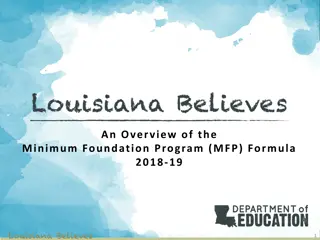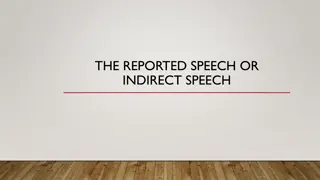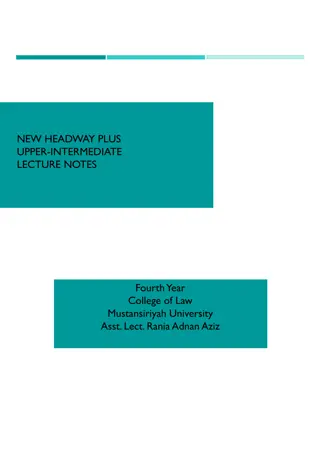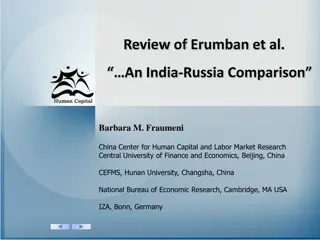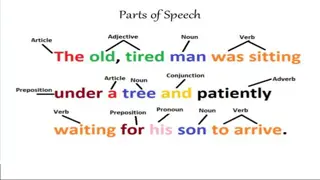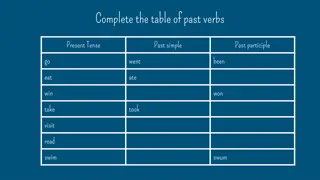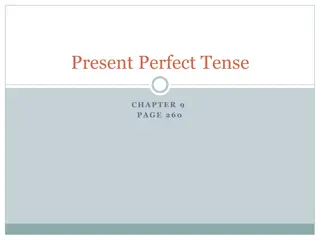
Louisiana Education Funding History Overview
In this overview of Louisiana's education funding history, we delve into the establishment of the Minimum Foundation Commission in 1990, the shift to a pupil-driven Minimum Foundation Program in 1992, the factors determining weighted pupil membership, the phased implementation of cost increases, the changes to the MFP formula in 1996-1997, and the goal for full funding by the year 2000.
Download Presentation

Please find below an Image/Link to download the presentation.
The content on the website is provided AS IS for your information and personal use only. It may not be sold, licensed, or shared on other websites without obtaining consent from the author. If you encounter any issues during the download, it is possible that the publisher has removed the file from their server.
You are allowed to download the files provided on this website for personal or commercial use, subject to the condition that they are used lawfully. All files are the property of their respective owners.
The content on the website is provided AS IS for your information and personal use only. It may not be sold, licensed, or shared on other websites without obtaining consent from the author.
E N D
Presentation Transcript
Executive Director Michael Faulk Louisiana Superintendents Association
1. In 1990, the Minimum Foundation Commission was formed and filed suit against the state relative to the equity of the funding formula for Public Education K thru 12. 2. In 1992, BESE approved a new Minimum Foundation Program (MFP) that was pupil driven rather than teacher driven.
3. The NEW Formula a) Began in 1992-93 School Year. b) The new formula changed to a per pupil concept. This concept involved: a) Using various categories of expenditures to determine the minimum costs to provide a program of education. b) These costs were divided by the pupil membership as of October 1st.
4. Various Factors Were Used to Determine a Weighted Pupil Membership. a) Base pupil membership as of Oct. 1st b) K-3 students c) At-risk students d) Secondary Voc. Ed. Units e) Remediation Units. 5. These totals were then multiplied by the per pupil amount of $1930.00 to determine Level I costs. a) State funded at 67% and local at 33%.
6. The wealthier a district, the less the state percentage and the more the local percentage. The less wealthy districts received a larger percentage of state funding and required a lesser percentage from local funds. 7. Because of the significant cost increase of the new formula the state determined that it would be best to have a phased-in approach. Therefore, in the resolution a provision was made for a 25% implementation of increased costs in Level I. This same provision stayed in place until 1996 and no progress was being made toward full implementation of this formula.
Per Pupil Allotment $2,500.00 $2,438.00 $2,450.00 Money per pupil $2,371.00 $2,400.00 $2,350.00 $2,300.00 $2,259.00 $2,250.00 $2,200.00 $2,150.00 1993-1994 1994-1995 1995-1996
1996 -1997 9. Major Changes to MFP Formula from 1996- 1997 to Present a) Legislative session of 1996 saw some major changes to the formula. b) These changes were designed to bring about more equity in the system and full funding of the MFP Formula by the year 2000.
10. Provision a) Placed in the resolution to assure the formula would be fully funded by the 1999-2000 School Year. b) Increase over the prior year 1996-1997 1997-1998 1998-1999 1999-2000 24.50% 29.20% 39.09% 100%
11. Percent of Implementation Over Prior Year 150.00% 100% 100.00% 39.09% 29.20% 50.00% 24.50% 0.00% 1996-1997 1997-1998 1998-1999 1999-2000
12. The Per Pupil Amount was frozen until the formula was fully implemented. a) A provision was also placed in the resolution to annually adjust the Per Pupil Amount by 3% if agreement could not be reached on an increase. This would take affect once the formula was fully funded.
13. The percentage of state/local share for Level I was changed to 65% state and 35% local. 35% State Local 65%
1997 - 2000 14. From 1997 until 2000 the following changes took place a) At risk factor raised to 17% b) Special Ed weights adjusted c) Economy of Scale factor adjusted d) Teacher pay raises incorporated e) Per pupil amount increased from $2,438 per pupil to $3,103 per pupil.
2001 - 2008 15. From 2001 until 2008 the following changes took place a) At risk factor increased from 20% to 21% in 2008 b) Per pupil amount increased 2.75% each year to reach $3,855 per pupil
2009 - 2010 16. In 2009 2010 the following changes took place a) At risk factor increased from 21% to 22% b) Voc Ed Weight increased from 5% to 6% c) The 2.75% Growth Factor not included
2010 - 2014 1. The 2012- 2013 MFP Resolution included provision to fund Charter Schools, Scholarship Students, students from the Louisiana School for Math, Science and Art, Louisiana School for the Deaf and Visually Impaired, Office of Juvenile Justice, Recovery School District, New Orleans Center for Creative Arts and the Special School District.
2). In 2013/14, the legislature included $69 M in the State Budget for K 12 public education, outside of the MFP, which was designed to be an effective 2.75% per pupil increase. a) 50% of monies were to be used to fund supplemental pay for certified personnel and pay the related benefits. b) 50% of funds were discretionary. c) Base per pupil was not increased 2.75% in the MFP Formula.
1) In 2014/15, the per pupil was increased from $3855 to $3961 a) Salary supplement were required to be put into teacher salary schedule. b) In 2015/16, the legislature, working off a static $3961 per pupil from the prior year, included $44 M in the State Budget for K12 public education, outside of the MFP, which was designed to be an effective 1.375% increase in funding.
*Note: The legislature attempted but failed to drawback a portion of that $44M in efforts to address the budget issues inherited by the Governor and Legislature that took office in January of 2016. c) In 2016/2017, the Legislature, still working off a static MFP from the prior year, included a reduced appropriation outside of the MFP of only $20 M for K12 public education, representing an actual reduction from 2015/16 in per pupil funding for k12 public education.
d) In 2017, the Legislature adopted a new MFP (HCR7) with the same base per pupil for the 2016/17 Fiscal Year. e)HCR7 did increase supplemental course allocation from $26 M to $59 M per pupil in grades 7-12 amounting to approximately $10M. f) Additionally Funding for High Needs SPED students increased by $8 M g) There was some supplemental funding, for one- year only, to a few flood effective districts.
1. The total State General Fund Budget for 2018/19 is approximately $8.6 Billion. 2. The total PROJECTED MFP Funding per the budget letter for the 2018/19 School Year is approximately $3.53 Billion. 3. That is approximately 41% of the State General Fund Budget. 4. In 2018, the Legislature adopted the MFP recommended by BESE with the same base per pupil and no 2.75% increase in the per pupil.
5. State MFP funding increased from $3.613 Billion in 2014/15 to $3.617 Billion in 2018/19 which was an increase of $4 Million. 6. From 2014/15 to 2018/19 total local revenues raised by the school districts have increased from $3.22 Billion to $3.60 Billion which is an increase of approximately $380 Million 7. The current level of funding calculates to be 50% state funding and roughly 50% local funding.
8. The MFP resolution calls for funding of the minimum program costs to be a ratio of 65% state and 35% local on the average.
1. 2019/20 School Year MFP RESOLUTION. a) BESE will decide around December or January adoption of the MFP resolution to submit to the legislature for the fiscal session to be held in the Spring. b) Article VIII, Section 13(B) of the Constitution of the Louisiana requires the BESE to develop and adopt, annually, a formula which is to be used to determine the cost of a Minimum Foundation Program of education in all public elementary and secondary schools as well as to allocate equitably the funds to parish and city school systems.
Year Amount 2009-2010 $3855 (actual) $3961 (2.75% increase) 2010-2011 $3855 (actual) $4069 (2.75% increase) 2011-2012 2012-2013 $3855 (actual) $4181 (2.75% increase) $3855 (actual) $4296 (2.75% increase) 2013-2014 $3855 (actual) $4415 (2.75% increase) 2014-2015 $3961 (actual) $4536 (2.75% increase) 2015-2016 $3961 (actual) $4661 (2.75% increase) 2016-2017 2017-2018 $3961 (actual) $4789 (2.75% increase) $3961 (actual) $4921 (2.75% increase) 2018-2019 $3961 (actual) $5056 (2.75% increase)
c) As noted earlier, there have been many instances since 2008 in which the base per pupil amount has remained the same and no increase adopted to cover rising costs.
d) Some Considerations Regarding Funding Issues 1) BESE needs to develop a formula which calculates the current day actual cost of a minimum program of education. a) Teacher Retirement System rates increased by 11.2%. The rate increased from 15.5.% in the 2008/09 School Year to 26.7 for the 2018/19 School Year
b) Normal inflationary increases range from 3 to 5% in the cost of operations. c) Increased health costs as a result of the Affordable Care Act. d) Increased costs to address reasonable measures to improve school safety and security. 1) Age of buildings 2) Lack of local resources (either manpower or financial)
e) Grant funding reductions/losses in Title Programs with the implementation of the Every Student Succeeds Act and the redirecting of monies previously going to school districts. f) Increased Professional Development costs with implementation of new standards (Science and Social Studies) and significant changes in School Accountability. g) Meet the requirements in technology capacity for mandated on-line testing.
Questions or Comments Contact Information: mfaulk65@gmail.com







